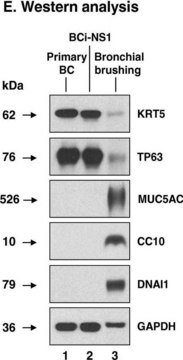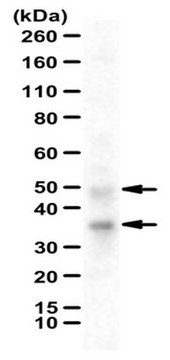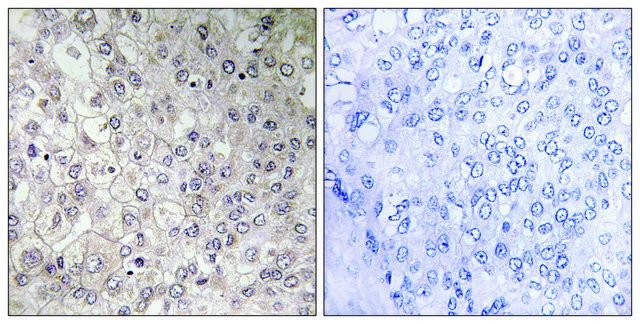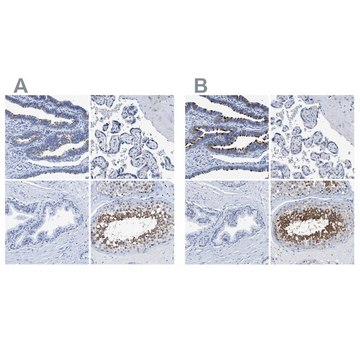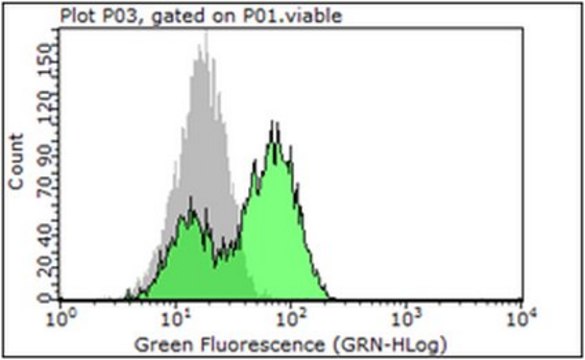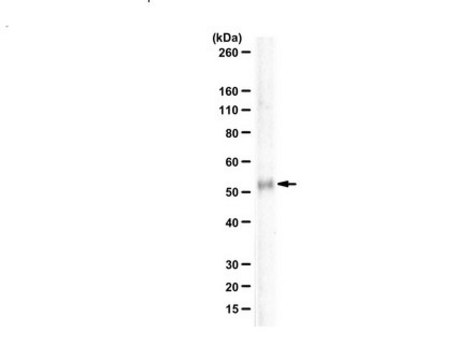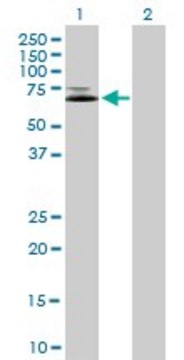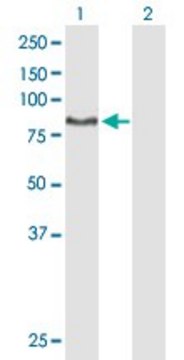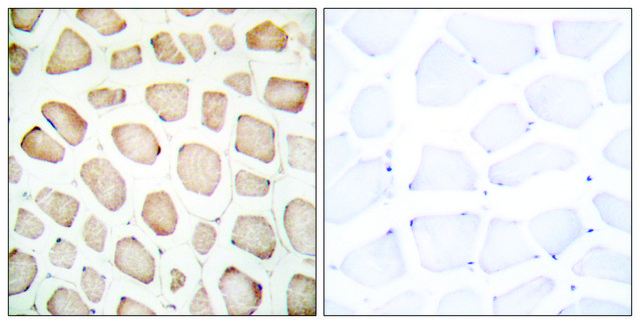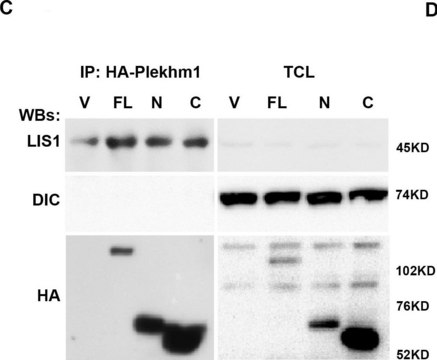SAB4501181
Anti-DNAI1 antibody produced in rabbit
affinity isolated antibody
Sign Into View Organizational & Contract Pricing
All Photos(1)
Synonym(s):
CILD1, ICS, MGC26204, PCD
UNSPSC Code:
12352203
NACRES:
NA.41
Recommended Products
biological source
rabbit
Quality Level
conjugate
unconjugated
antibody form
affinity isolated antibody
antibody product type
primary antibodies
clone
polyclonal
form
buffered aqueous solution
mol wt
antigen 79 kDa
species reactivity
rat, mouse, human
concentration
~1 mg/mL
technique(s)
ELISA: 1:20000
western blot: 1:500-1:1000
NCBI accession no.
UniProt accession no.
shipped in
wet ice
storage temp.
−20°C
target post-translational modification
unmodified
Gene Information
human ... DNAI1(27019)
General description
Anti-DNAI1 Antibody detects endogenous levels of total DNAI1 protein.
Immunogen
The antiserum was produced against synthesized peptide derived from human DNAI1.
Immunogen Range: 211-260
Immunogen Range: 211-260
Application
Anti-DNAI1 antibody produced in rabbit is suitable for indirect ELISA and western blot.
Biochem/physiol Actions
DNAI1 (Dynein axonemal intermediate chain 1) encodes an intermediate of outer dynein arms (ODA) proteins of cilia. Mutation in DNAI1 gene causes a trilogy syndrome named as Kartagener syndrome (KS), a rare recessive hereditary disorder named primary ciliary dyskinesia (PCD).
Features and Benefits
Evaluate our antibodies with complete peace of mind. If the antibody does not perform in your application, we will issue a full credit or replacement antibody. Learn more.
Physical form
Rabbit IgG in phosphate buffered saline (without Mg2+ and Ca2+), pH 7.4, 150mM NaCl, 0.02% sodium azide and 50% glycerol.
Disclaimer
Unless otherwise stated in our catalog or other company documentation accompanying the product(s), our products are intended for research use only and are not to be used for any other purpose, which includes but is not limited to, unauthorized commercial uses, in vitro diagnostic uses, ex vivo or in vivo therapeutic uses or any type of consumption or application to humans or animals.
WGK
nwg
Flash Point(F)
Not applicable
Flash Point(C)
Not applicable
Regulatory Information
新产品
Certificates of Analysis (COA)
Search for Certificates of Analysis (COA) by entering the products Lot/Batch Number. Lot and Batch Numbers can be found on a product’s label following the words ‘Lot’ or ‘Batch’.
Already Own This Product?
Find documentation for the products that you have recently purchased in the Document Library.
Fenglan Dong et al.
The Journal of cell biology, 204(2), 203-213 (2014-01-15)
Axonemal dynein complexes are preassembled in the cytoplasm before their transport to cilia, but the mechanism of this process remains unclear. We now show that mice lacking Pih1d3, a PIH1 domain-containing protein, develop normally but manifest male sterility. Pih1d3(-/-) sperm
Kyeong Jee Cho et al.
PLoS genetics, 14(3), e1007316-e1007316 (2018-03-31)
Zinc finger MYND-type-containing 10 (ZMYND10), a cytoplasmic protein expressed in ciliated cells, causes primary ciliary dyskinesia (PCD) when mutated; however, its function is poorly understood. Therefore, in this study, we examined the roles of ZMYND10 using Zmynd10-/-mice exhibiting typical PCD
C Guichard et al.
American journal of human genetics, 68(4), 1030-1035 (2001-03-07)
Kartagener syndrome (KS) is a trilogy of symptoms (nasal polyps, bronchiectasis, and situs inversus totalis) that is associated with ultrastructural anomalies of cilia of epithelial cells covering the upper and lower respiratory tracts and spermatozoa flagellae. The axonemal dynein intermediate-chain
Mike Failly et al.
Respiration; international review of thoracic diseases, 76(2), 198-204 (2008-04-25)
Primary ciliary dyskinesia (PCD) is a rare recessive hereditary disorder characterized by dysmotility to immotility of ciliated and flagellated structures. Its main symptoms are respiratory, caused by defective ciliary beating in the epithelium of the upper airways (nose, bronchi and
Maimoona A Zariwala et al.
American journal of respiratory and critical care medicine, 174(8), 858-866 (2006-07-22)
Primary ciliary dyskinesia (PCD) is a rare, usually autosomal recessive, genetic disorder characterized by ciliary dysfunction, sino-pulmonary disease, and situs inversus. Disease-causing mutations have been reported in DNAI1 and DNAH5 encoding outer dynein arm (ODA) proteins of cilia. We analyzed
Our team of scientists has experience in all areas of research including Life Science, Material Science, Chemical Synthesis, Chromatography, Analytical and many others.
Contact Technical Service